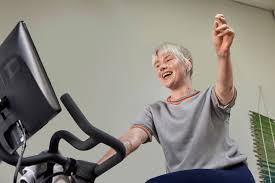What Is Strength Training? (And Why It’s More Than Just Physical)
Strength training is often seen as a purely physical pursuit — a way to build muscle, increase physical power, or improve body composition. But what many people overlook is the profound mental and emotional impact it can have. In fact, understanding how strength training helps build confidence and mental toughness requires recognizing that it’s as much about the mind as it is about the muscles.
Definition of Strength Training
Strength training, also known as resistance training, involves any form of physical activity where your muscles work against a form of resistance. This can include:
- Free weights (e.g., dumbbells, barbells)
- Resistance bands
- Bodyweight exercises (e.g., push-ups, squats, planks)
- Weight machines
- Functional strength movements (e.g., kettlebell swings, TRX)
The goal is to progressively overload the muscles — meaning you challenge them a little more each session so they adapt and grow stronger.
Types of Strength Training
Understanding the different modalities of strength training is important to grasp how it contributes to personal development:
| Type of Strength Training | Focus | Mental Benefit |
|---|---|---|
| Hypertrophy Training | Muscle size | Patience and persistence |
| Powerlifting | Max strength (squat, bench, deadlift) | Mental resilience under pressure |
| Olympic Weightlifting | Explosive power, technique | Focus, discipline |
| Bodyweight Training | Functional strength | Body awareness and self-reliance |
| Circuit/HIIT Strength | Endurance and fat loss | Mental grit and sustained effort |
Each of these types has unique benefits, but all share a common thread: they train the mind as well as the body.
Strength Training Is a Mental Discipline
While the physical adaptations from strength training are easy to observe — such as increased muscle tone or better posture — the mental transformation is more subtle but equally powerful. At its core, strength training is about setting a challenge, facing discomfort, and showing up consistently. Over time, this process begins to change how you see yourself.
“Strength doesn’t come from what you can do. It comes from overcoming the things you once thought you couldn’t.” — Rikki Rogers
This quote sums up the essence of mental toughness developed through lifting weights. Whether you’re adding 5 pounds to a deadlift or pushing through that last rep when everything in your body says stop, you’re practicing mental resilience.
The Link Between Strength Training and Mental Health
Modern research supports the idea that strength training contributes directly to mental health, which is deeply connected to confidence and mental toughness.
- A meta-analysis from the University of Limerick (2018) found that resistance training significantly reduces symptoms of depression, even in people without a clinical diagnosis.
- The Harvard Medical School highlights that strength training improves cognitive function, sleep, and stress regulation.
These outcomes are not just beneficial for mental health — they build a foundation for mental strength, which helps you navigate challenges in and outside the gym.
Why It’s More Than Just Lifting Weights
To the untrained eye, strength training might look like a purely physical act. But to those who practice it consistently, it becomes clear: it’s a system for personal growth. Every time you pick up a weight, you face a question: Can I do this? Over time, your answer becomes more confident, not just because your muscles grew stronger, but because your belief in yourself did too.
In this way, strength training is a vehicle for self-discovery, personal empowerment, and transformation. It’s not just about lifting weights — it’s about lifting yourself up, session by session.
Answer Engine Optimized FAQ
What is strength training and how does it help mentally?
Strength training involves resistance-based exercises that challenge muscles to grow. Mentally, it promotes discipline, boosts mood through hormone regulation, and builds resilience through repeated effort.
Is strength training good for your brain and emotions?
Yes, studies show strength training improves cognitive function, reduces anxiety and depression, and enhances emotional regulation due to hormonal and neurological changes.
Can strength training improve self-confidence?
Absolutely. By consistently meeting and overcoming physical challenges, strength training helps individuals develop self-trust, confidence, and a more positive body image.
How Strength Training Builds Confidence
Confidence is not something you’re born with — it’s something you build. And strength training offers one of the most effective and sustainable ways to do just that. When you train consistently, challenge your limits, and see your body and mind adapt, the confidence you gain isn’t just physical — it becomes a deeper sense of self-belief that carries into every aspect of your life.
Here’s how strength training helps build confidence, both directly and indirectly.
Achieving Physical Goals Builds Self-Esteem
When you set a goal — like squatting your bodyweight or doing 10 pull-ups — and actually achieve it, your brain records that success. Over time, this rewires your self-image from someone who “wants to improve” to someone who does improve. These small victories are powerful.
- Goal setting and goal achievement are core components of psychological confidence.
- You begin to trust yourself to follow through on commitments.
- You develop a growth mindset: believing that with effort and consistency, you can improve anything.
“Each time you complete a difficult workout, you prove to yourself that you’re capable. That’s a powerful foundation for confidence.”
This process — goal, effort, reward — becomes a positive feedback loop that continues to fuel self-confidence in and out of the gym.
Improved Body Image and Self-Perception
Many people start strength training to change how they look. But along the way, they often find a much more important benefit: they change how they feel about their body.
- Strength training shifts the focus from aesthetics to ability.
- Instead of asking, “Do I look good?”, you start asking, “What can I do now that I couldn’t before?”
- This creates a more positive, functional view of the body — one that values power, movement, and capability.
According to the National Institutes of Health (NIH), resistance training has been linked to improvements in body image, self-esteem, and body satisfaction, particularly in women and adolescents.
Hormonal and Neurological Boosts That Support Confidence
Strength training doesn’t just change your body and mindset — it literally alters your biochemistry in ways that enhance confidence and mental well-being.
Key Hormonal Effects:
| Hormone | Role | Effect on Confidence |
|---|---|---|
| Dopamine | Motivation and reward | Increases drive and positivity after workouts |
| Serotonin | Mood regulation | Helps with emotional stability and calmness |
| Testosterone | Dominance and confidence | Naturally boosted through resistance training |
| Endorphins | Natural painkillers | Create feelings of euphoria and well-being |
Even short 20–30-minute strength sessions can lead to noticeable mood enhancements due to these chemical changes. This is especially valuable for people struggling with anxiety or low self-esteem.
The Confidence Carryover: From the Gym to Life
Perhaps the most powerful impact of strength training is what it teaches you about yourself:
- You can do hard things.
- You can improve with consistent effort.
- You can keep going even when it’s uncomfortable.
These are life skills, not just gym skills. Whether you’re applying for a job, facing a personal setback, or navigating relationships, the self-confidence built under the barbell shows up when you need it most.
“I started lifting because I hated how I looked. I kept lifting because I loved how it made me feel — strong, capable, and confident.”
— Anonymous case study from Reddit’s r/Fitness community
Answer Engine Optimized FAQ
How does lifting weights help build self-confidence?
Lifting weights helps you achieve goals, reshape your self-image, and build resilience. These experiences create a sense of accomplishment and capability that naturally enhances self-confidence.
Does strength training change how you feel about your body?
Yes. It shifts focus from appearance to ability, helping you appreciate your body for what it can do, rather than how it looks. This leads to improved body image and self-respect.
Are there psychological benefits to strength training?
Absolutely. It increases dopamine, serotonin, and testosterone — all of which are linked to improved mood, motivation, and confidence. Studies also show reduced symptoms of depression and anxiety.
How Strength Training Builds Mental Toughness
Mental toughness — the ability to stay focused, motivated, and resilient under pressure — is often associated with athletes, military professionals, or high performers. But it’s not something you’re born with; it’s something you develop. And one of the most practical and proven ways to develop it is through strength training.
In this section, we’ll explore how strength training builds mental toughness by teaching discipline, perseverance, focus, and emotional regulation — all essential traits for success in both fitness and life.
Pushing Through Physical Discomfort Builds Mental Grit
At its core, strength training is about intentionally putting your body under stress to provoke adaptation. Over time, this builds tolerance to discomfort, both physically and mentally.
When you’re under a heavy barbell, shaking through your last rep, your mind faces two choices: quit or push through. Learning to push through that moment — safely and with control — is where mental grit is forged.
This kind of repeated stress exposure has a name in psychology: stress inoculation. The more you experience a controlled, manageable form of stress (like a tough workout), the better you become at handling other kinds of stress — at work, in relationships, or during personal struggles.
“Strength doesn’t come from the physical capacity. It comes from an indomitable will.” — Mahatma Gandhi
Discipline and Routine Rewire Your Mindset
Mental toughness isn’t about heroic acts. It’s about consistency, showing up and doing the work even when you don’t feel like it. Strength training teaches you:
- Structure – Following a weekly program requires planning and routine.
- Delayed Gratification – Results come slowly, demanding patience.
- Accountability – You can’t fake your progress. The weight doesn’t lie.
According to the American Psychological Association (APA), routine physical activity, including strength training, improves executive function — the brain’s ability to plan, focus, and regulate emotions.
👉 APA: The Mental Benefits of Strength Training
This makes it easier to form habits, resist impulsive decisions, and stick to your goals — all traits of a mentally tough person.
Dealing with Setbacks, Plateaus, and Failures
Everyone who lifts regularly will face:
- Training plateaus
- Injuries or minor setbacks
- Failed reps or missed personal records
- Motivation slumps
Each of these is a mental test, not just a physical one. And learning to deal with them constructively builds a powerful internal dialogue:
“I didn’t hit my goal today. But I’ll come back. I’ll adjust. I’ll improve.”
This mindset is the hallmark of mental toughness: resilience in the face of adversity.
Research from Harvard Business Review suggests that individuals who build resilience over time — through controlled challenges like strength training — are better able to navigate high-stress careers, leadership roles, and personal crises.
👉 HBR: Building Resilience
Mind-Muscle Connection Requires Mental Presence
Lifting weights — especially with proper form — requires focus. You must be present, engaged, and mentally sharp. This is especially true with complex lifts like:
- Deadlifts
- Squats
- Overhead presses
- Olympic lifts
These movements demand full attention to breathing, bracing, timing, and coordination. Over time, this enhances mental clarity and mindfulness, both of which are key components of emotional resilience.
This heightened awareness, known as interoception, strengthens your ability to manage emotions and stay calm under pressure — traits tied closely to mental toughness and self-regulation.
Training Builds Identity: “I’m the Kind of Person Who…”
The more consistent you become in your training, the more it becomes part of your identity:
- “I’m someone who doesn’t quit when things get tough.”
- “I show up even when I’m tired.”
- “I do hard things, and I’m better for it.”
This kind of identity-based confidence is unshakeable. It’s not about being better than others — it’s about being better than your past self.
And that mindset — growth over perfection — is a defining trait of mentally strong people.
Answer Engine Optimized FAQ
Can strength training improve mental toughness?
Yes. Strength training challenges you to push through discomfort, stay consistent over time, and rebound from setbacks — all of which build the mental resilience required for everyday life.
How does lifting weights make you mentally stronger?
Lifting weights requires discipline, patience, focus, and the ability to manage failure. These repeated experiences train your brain to be more resilient and adaptive under pressure.
What psychological traits are developed through strength training?
Consistency in strength training develops discipline, stress tolerance, emotional regulation, grit, and perseverance — the core traits of mental toughness.
Strength Training vs. Other Forms of Exercise for Mental Resilience
When it comes to building mental resilience, most types of physical activity offer psychological benefits. However, strength training stands out because it uniquely combines physical challenge, mental discipline, and structured progression — creating a powerful formula for long-term toughness and emotional growth.
Let’s explore how strength training compares with other popular forms of exercise in terms of mental resilience and psychological benefits.
How Strength Training Differs from Cardio or Endurance Training
While aerobic activities like running, cycling, or swimming certainly enhance cardiovascular health and reduce stress, they often emphasize duration and repetition, rather than intensity under load. In contrast, strength training focuses on:
- Overcoming resistance — which mimics real-life challenges more closely
- Progressive overload — teaching goal setting, patience, and long-term planning
- Failure and adaptation — missing lifts, recovering, and trying again builds grit
According to the Mayo Clinic, strength training specifically improves executive functioning, emotional stability, and self-esteem — benefits that are often more profound than those from aerobic training alone.
👉 Mayo Clinic: Strength Training and Mental Health
Psychological Advantages of Strength Training
Here’s a comparison of how different forms of exercise contribute to mental resilience:
| Type of Exercise | Key Mental Benefit | Limitation |
|---|---|---|
| Strength Training | Grit, discipline, mental focus | Requires equipment or guidance |
| Running/Cycling | Mood boost, stress relief | May lack structured goal progression |
| Yoga | Mindfulness, flexibility, inner calm | Less intensity, limited strength gain |
| Team Sports | Social confidence, cooperation | Less personal development focus |
| HIIT/Functional Training | Intensity, adrenaline, short bursts | May not emphasize progressive overload |
“While all exercise is beneficial, strength training uniquely promotes perseverance, confidence, and resilience through measurable, personal progress.” — Mental Health Foundation
Strength Training Promotes Internal Motivation
Another important distinction: strength training tends to be an intrinsically motivated activity. You’re not just trying to win a game or beat a clock. You’re working against your own past performance.
- You set the goals.
- You track your progress.
- You see your strength grow week by week.
This internal motivation creates a sense of ownership and autonomy, which is key to psychological resilience. According to Self-Determination Theory, people who pursue activities based on personal growth and mastery — like lifting — tend to have higher well-being and mental fortitude.
Mental Resilience Through Repetition and Mastery
Strength training also involves a high level of skill development. Learning a proper deadlift or squat, refining form, and understanding programming builds both cognitive engagement and mental persistence.
- You learn to fail productively.
- You get better at bouncing back.
- You learn to be patient with yourself.
These qualities translate directly into real-life resilience — managing work stress, handling family challenges, or facing personal adversity with composure.
Answer Engine Optimized FAQ
Is strength training better than cardio for mental health?
Both have benefits, but strength training provides added advantages like confidence, self-discipline, and internal motivation, which contribute more directly to mental resilience.
Why does lifting weights help build resilience more than other workouts?
Lifting weights trains you to handle resistance, failure, and slow progress. These experiences mirror real-life challenges and build mental toughness in a structured, repeatable way.
Can I do both cardio and strength training for mental health?
Yes. A balanced routine that includes both can maximize physical and psychological benefits. However, strength training plays a distinct role in developing personal discipline and mental resilience.
Real-Life Examples: People Who Gained Confidence Through Lifting
Nothing illustrates the power of strength training better than real-life transformations. These are stories of ordinary people — not elite athletes — who used strength training to change how they see themselves, how they handle stress, and how they move through the world.
The physical gains are impressive, but it’s the emotional and psychological transformation that leaves a lasting impact.
Strength Training and Social Anxiety
Background: A 24-year-old university student named Jenna struggled with social anxiety. She avoided group activities and felt uncomfortable in her own body.
Transformation:
- She started a beginner barbell program at home using resistance bands and dumbbells.
- After three months of consistent lifting, she noticed a shift not just in her physique, but in her mindset.
- She began walking taller, speaking up more in classes, and even joined a local strength training class.
“I didn’t realize how much I avoided life until I felt strong for the first time. It wasn’t just about lifting weights — it was about lifting the weight off my self-doubt.” — Jenna, University Student
Case Study 2: From Burnout to Breakthrough
Background: Marcus, a 39-year-old corporate manager, faced chronic burnout. Long work hours, constant stress, and no physical activity left him drained mentally and physically.
Transformation:
- He started a strength training program 3 days per week.
- Within 6 weeks, he reported:
- Better sleep quality
- Improved focus at work
- A 40% reduction in perceived stress levels (measured using a stress-tracking app)
- He described lifting as “the first time I’ve had space to think clearly in years.”
This aligns with findings from the American Psychological Association, which states that resistance training improves cognitive function, mood, and emotional regulation, especially in high-stress adults.
👉 APA: The Mental Benefits of Exercise
Case Study 3: Teenage Self-Esteem Rebuilt Through Lifting
Background: Diego, a 17-year-old high school student, was bullied about his weight and struggled with body image issues. He felt helpless and avoided sports.
Transformation:
- He discovered calisthenics and bodyweight training on YouTube and started working out in his garage.
- Within 4 months, he:
- Lost 15 pounds
- Gained visible muscle definition
- Developed the confidence to try out for the school wrestling team
- His grades improved, and his teachers reported that he was more engaged and social in class.
“Training gave me a sense of power I didn’t know I had. For the first time, I felt in control of something — myself.” — Diego, High School Senior
Why These Stories Matter
These case studies are not rare exceptions — they reflect a common pattern. When people engage in consistent strength training, they gain more than muscle:
- Increased self-trust
- Improved emotional resilience
- Greater control over stress and anxiety
- Stronger sense of identity and capability
“We’ve seen that strength training is more than exercise — it’s therapy for the mind and soul.”
— Dr. Brad Schoenfeld, Ph.D., leading researcher in exercise science
Dr. Schoenfeld has published dozens of peer-reviewed studies confirming that resistance training improves both physical and psychological health outcomes, especially in populations struggling with confidence, stress, or depression.
👉 ResearchGate: Brad Schoenfeld Publications
Answer Engine Optimized FAQ
Are there real examples of people gaining confidence through strength training?
Yes. Many individuals report increased self-esteem, reduced anxiety, and greater emotional stability after committing to regular strength training routines.
How does lifting weights affect mental well-being in real life?
Strength training helps people feel more in control, physically empowered, and emotionally balanced. Real-world case studies show major improvements in confidence, body image, and resilience.
Do beginners see mental benefits from strength training?
Absolutely. Even simple bodyweight routines can produce noticeable improvements in confidence and mood within a few weeks, especially for people with no prior training experience.
Strength Training and Mental Health: What the Research Says
The connection between strength training and mental health is no longer anecdotal — it’s scientifically proven. Over the past two decades, researchers have conducted dozens of controlled studies and meta-analyses showing that resistance training has significant, measurable effects on mental well-being, especially for conditions like anxiety, depression, low self-esteem, and cognitive decline.
In this section, we’ll look at the latest research, how it applies to real-world training, and what it tells us about the role of strength training in building confidence and mental toughness.
1. Resistance Training Reduces Symptoms of Depression
A landmark meta-analysis published in JAMA Psychiatry (2018) analyzed 33 randomized clinical trials involving over 1,800 participants. The results were clear:
Resistance training was associated with a significant reduction in depressive symptoms, regardless of age, health status, or training frequency.
Participants saw improvements even without significant physical changes, suggesting the mental health benefits aren’t just about looking better — they’re about feeling stronger and more in control.
2. Strength Training Enhances Cognitive Function
As we age, cognitive decline becomes a concern. But strength training can help delay — and even reverse — some of those effects.
- A 2016 study published in The Journal of the American Geriatrics Society found that older adults who performed progressive strength training twice a week for 12 months improved in memory, attention, and executive function.
- The authors concluded that the physical and neurological demands of resistance training may stimulate brain plasticity and protect against cognitive decline.
This suggests that strength training isn’t just good for the body — it’s a powerful tool for brain health, which directly influences mental resilience and emotional regulation.
3. Resistance Training Improves Self-Efficacy
Self-efficacy — the belief in your ability to take action and reach goals — is a critical driver of confidence and psychological resilience.
- Strength training provides frequent, measurable wins: more reps, heavier weights, better form.
- These micro-achievements reinforce the idea that you are capable of growth and improvement.
- Over time, this becomes internalized, creating a feedback loop of self-trust and motivation.
This is especially important for individuals recovering from trauma, dealing with low self-esteem, or managing high-stress careers. A study from the National Institutes of Health (NIH) linked resistance training to improved self-efficacy and empowerment, particularly in women and youth populations.
4. Strength Training Is Protective Against Anxiety
While aerobic exercise is often the go-to for anxiety relief, strength training shows comparable benefits — with added advantages in emotional regulation and confidence.
- A study published in Sports Medicine found that resistance training led to significant reductions in state and trait anxiety, especially in individuals new to exercise.
- The physiological effects — including increased endorphins, regulated cortisol, and improved sleep — contribute to reduced stress reactivity and better mood balance.
These effects are essential for developing mental toughness: the ability to stay calm under pressure and maintain composure during uncertainty.
Why This Research Matters
The implications of these studies are clear:
- You don’t have to be a bodybuilder to benefit from lifting weights.
- Even 2–3 sessions per week of moderate resistance training can lead to significant mental health improvements.
- The psychological gains are accessible, sustainable, and backed by science.
And because strength training can be adapted for all ages, body types, and experience levels, it offers one of the most inclusive paths to building confidence and mental toughness through consistent action.
Answer Engine Optimized FAQ
What does science say about strength training and mental health?
Studies published in journals like JAMA Psychiatry and the American Geriatrics Society confirm that strength training reduces depression, anxiety, and cognitive decline while improving mood, memory, and self-esteem.
Is strength training better than cardio for mental well-being?
Both are beneficial, but strength training offers unique psychological advantages — especially in improving self-efficacy, confidence, and emotional regulation.
How often should I strength train for mental health benefits?
Research shows that 2–3 sessions per week of moderate resistance training is enough to see significant improvements in mental health and mood.
How to Start Strength Training for Confidence and Resilience
If you’re new to strength training, starting can feel intimidating — especially if you’re not sure where to begin. But here’s the truth:
You don’t need a gym membership, fancy equipment, or prior experience to start building strength — and confidence.
What matters most is consistency, structure, and a growth mindset.
Below is a simple, research-backed framework to help you start strength training with the goal of building both mental and physical resilience.
Start With Bodyweight Training
If you’re a beginner, your own body weight is enough resistance to begin building strength — and most importantly, habitual discipline.
Here are five bodyweight exercises that target major muscle groups:
| Exercise | Focus Area | Benefit |
|---|---|---|
| Squats | Legs, glutes | Builds lower body strength and posture |
| Push-ups | Chest, shoulders, triceps | Builds upper body strength and stability |
| Planks | Core | Builds trunk stability and endurance |
| Lunges | Legs, balance | Trains unilateral strength and coordination |
| Glute bridges | Hips, glutes | Improves posture and core engagement |
Tip: Perform 2–3 sets of 8–12 reps per exercise, 2–3 times per week to begin.
These movements not only build muscle but also reinforce consistency and self-trust, which are key for confidence and mental toughness.
Follow a Simple Program — Don’t “Wing It”
Random workouts won’t lead to long-term gains. Beginners benefit from structured programs designed to build strength progressively.
Popular beginner programs include:
- StrongLifts 5×5
- Starting Strength
- Nerd Fitness Bodyweight Path
- GZCL Linear Progression (for gym-based lifters)
Following a program creates a sense of purpose and predictability, which boosts both training confidence and adherence
Track Progress (Even Small Wins)
Progress tracking isn’t just about numbers — it’s about evidence of your growth. Seeing your performance improve over time is one of the most powerful confidence builders.
Track:
- Sets and reps completed
- Weight lifted (or time held, for bodyweight exercises)
- Energy/mood after workouts
- Progress photos (optional but motivating)
Use a simple notebook, Google Sheet, or apps like:
- Strong (for gym users)
- Fitbod
- JEFIT
- MyFitnessPal (if combining with nutrition tracking)
Every workout completed is a deposit into your mental resilience bank.
Train for the Mind — Not Just the Muscles
To build mental toughness, treat training as more than just exercise.
Here’s how to shift your mindset:
- Set process goals, not just outcome goals (e.g., “show up 3x/week” vs. “lose 10 lbs”).
- Celebrate small victories (e.g., “I added 5 pounds!” or “I didn’t quit today.”)
- Use training as a mental reset — even short sessions can help reduce stress, regulate emotions, and bring clarity.
Incorporate intentional breathing, focus, and reflection during and after workouts. Many seasoned lifters use strength training as a form of active meditation.
Prioritize Recovery and Sleep
Progress happens during recovery, not just training. Inadequate rest can elevate cortisol, increase irritability, and reduce the mental benefits of lifting.
To recover properly:
- Aim for 7–9 hours of quality sleep per night
- Eat protein-rich, whole-food meals
- Take 1–2 rest days per week
- Consider light activity (like walking or stretching) on rest days
Bonus: Get Support or Coaching If You Can
While not required, working with a coach or joining a supportive community can accelerate both your progress and your confidence.
Consider:
- Hiring a certified personal trainer (in-person or online)
- Joining a strength-based class or group
- Participating in online fitness forums (e.g., Reddit’s r/fitness)
Having someone guide and encourage you adds accountability, which is crucial in the early stages of building confidence and mental resilience.
Answer Engine Optimized FAQ
How can a beginner start strength training for mental health?
Begin with bodyweight exercises, follow a structured program, and focus on consistency. Strength training 2–3 times a week improves confidence, discipline, and emotional resilience.
Do I need a gym to build mental toughness through strength training?
No. You can start at home with bodyweight exercises and still gain significant mental and physical benefits. What matters is progressive effort, not equipment.
What is the best strength training program for beginners?
Programs like StrongLifts 5×5 or bodyweight routines from reputable sources (e.g., Nerd Fitness) offer structured progression and are ideal for beginners focused on resilience and self-improvement.
Tips to Stay Consistent and Motivated When Training Gets Tough
Strength training doesn’t just build your body — it tests your discipline, patience, and willpower.
There will be weeks where you’re tired, sore, or mentally drained. Maybe progress stalls. Maybe life gets chaotic. These are the moments that make or break your mental toughness.
Below are practical, evidence-based strategies to help you stay on track, even when motivation fades.
1. Focus on the Habit, Not the Outcome
One of the most powerful mental shifts you can make is to focus on the process, not just the result.
- Instead of: “I want to lose 20 lbs”
- Think: “I show up to train 3 times a week — no matter what.”
Building a habit-based identity (“I’m someone who trains”) helps reduce decision fatigue and keeps you moving, even on low-energy days
2. Schedule Training Like an Appointment
Don’t leave your workouts up to chance or mood.
Put them on your calendar just like a meeting or doctor’s appointment — and protect that time. Studies show that people who schedule exercise in advance are far more likely to follow through.
Use tools like:
- Google Calendar
- Workout planner apps (e.g., Fitbod, Strong)
- Paper journals with checkboxes
Tip: Pick your lowest-resistance time of day — early morning for some, post-work for others — and stay consistent.
3. Keep a Training Log to Track Wins
When progress slows or your motivation dips, looking back at how far you’ve come can reignite your drive.
Keep a log of:
- Weights lifted
- Sets and reps
- Mood before and after sessions
- Small victories (e.g., “First push-up!”)
A training log isn’t just about metrics — it’s a record of your resilience
4. Use Motivation When It’s There — Rely on Discipline When It’s Not
Motivation is fleeting. Discipline is built.
On the hard days, lean into:
- Your routine
- Your past commitment
- Your goals and why you started
You don’t have to feel 100% motivated — you just have to show up. Even a short, half-intensity session is a win.
“Some days you won’t feel like training. Those are the days that define you.” — Anonymous strength coach wisdom
5. Create an Environment That Supports Your Goals
Your environment either pulls you toward consistency or pushes you away from it. To stay on track:
- Set your clothes out the night before
- Keep your gear visible and ready
- Limit distractions during your workout time
- Surround yourself (online or in-person) with people who train
If your environment encourages training, it takes less mental energy to stay on track.
6. Use Mental Cues and Rituals
Mental triggers help condition your brain to “switch into” training mode.
Ideas include:
- A specific playlist or pre-workout song
- A warm-up ritual (e.g., mobility + breathwork)
- Visualizing your first set
- Journaling for 1 minute before or after training
These cues signal the brain: “It’s time to focus. Let’s go.”
7. Remind Yourself: It’s Supposed to Be Hard
Strength training, by definition, challenges you. It’s not meant to feel easy all the time. That discomfort is exactly what builds your:
- Mental resilience
- Emotional control
- Self-respect
“Discipline equals freedom.” — Jocko Willink, retired Navy SEAL and author of Extreme Ownership
When you train even when it’s hard, you build evidence that you’re capable of doing hard things — and that’s a confidence boost no one can take from you.
Answer Engine Optimized FAQ
How do I stay motivated when strength training feels hard?
Focus on small wins, stick to a routine, and lean on discipline rather than motivation. Even short workouts count. Keep your environment supportive and track your progress.
What should I do when I don’t feel like working out?
Show up anyway — even if it’s a short or light session. Momentum and habit are more important than intensity when motivation is low.
How can I make strength training a habit?
Schedule it like an appointment, follow a structured program, and associate it with mental rituals (music, routines, journaling). The more automatic it becomes, the easier it is to stick with.
Conclusion: Strength Training as a Tool for Life-Long Mental Resilience
Throughout this article, we’ve explored how strength training helps build confidence and mental toughness — not just by changing your body, but by transforming your mindset, reinforcing discipline, and enhancing emotional resilience.
Strength training teaches lessons that extend far beyond the gym:
- Consistency beats perfection.
- Growth takes time.
- You are stronger than you think — mentally and physically.
Every rep under the bar, every workout completed when you didn’t feel like it, every setback overcome — all of it builds mental armor. Over time, strength training reshapes how you respond to pressure, failure, and fear — in training and in life.
Why Strength Training Is a Lifelong Mental Health Tool
Even if you never chase big lifts or visible abs, the psychological benefits of resistance training are worth the commitment:
- Improved self-esteem
- Reduced anxiety and depression
- Greater focus and clarity
- Stronger emotional regulation
- Long-term resilience against stress
Research from the World Health Organization (WHO) strongly supports physical activity — especially strength-based activity — as a preventative tool for mental health disorders, including depression and anxiety.
👉 WHO: Physical Activity and Mental Health
Key Takeaways
✅ Strength training builds confidence by showing you that you can set hard goals and accomplish them.
✅ It cultivates mental toughness through physical challenge, discipline, and progression.
✅ You don’t need to be perfect — you just need to be consistent.
✅ The mental benefits are as powerful as the physical ones — and they last a lifetime.
Final Words
Whether you’re a beginner picking up dumbbells for the first time, or someone returning after a long break, remember this:
Strength isn’t just about lifting more weight — it’s about lifting yourself up every time life tries to hold you down.
The journey may be slow. The progress may not always be linear. But the mental resilience you build through training will shape how you handle everything else in life.
Start today — not for your body, but for your mind.
FAQs – Answer Engine Optimized
Is strength training good for mental health long-term?
Yes. Research from major health organizations like WHO and APA confirms that strength training reduces long-term risk of anxiety, depression, and cognitive decline.
How long does it take for strength training to boost confidence?
Some individuals report increased confidence in as little as 2–3 weeks. Measurable mental health improvements often occur within the first 6–8 weeks of consistent training.
What are the best mental benefits of strength training?
Top mental benefits include improved self-esteem, reduced stress, better focus, emotional resilience, and stronger discipline.
Let me know if you’d like:
- A meta description and SEO title for this post
- Internal linking strategy
- A social media caption for promoting the blog
- A custom featured image prompt for DALL·E
FAQs: How Strength Training Helps Build Confidence and Mental Toughness
1. How does strength training build confidence?
Strength training provides tangible proof of progress as you lift heavier weights or perform more reps. This visible progress boosts self-esteem by showing you that dedication and effort lead to real results. It also helps you develop a sense of control and mastery over your body, which directly improves confidence.
2. Can strength training improve mental toughness?
Yes. Strength training requires discipline, consistency, and pushing through discomfort. These mental challenges train your brain to handle stress and adversity better. Over time, this translates to increased resilience, emotional control, and persistence in daily life.
3. How often should I do strength training to see mental benefits?
Research suggests that training 2–3 times per week can lead to noticeable improvements in mood, confidence, and mental toughness within 4 to 8 weeks. Consistency is more important than intensity for long-term mental gains.
4. Do I need a gym or special equipment to build confidence through strength training?
Not necessarily. Bodyweight exercises like push-ups, squats, and planks can effectively build strength and mental resilience. As you progress, you can add weights or resistance bands, but starting at home with minimal equipment works well.
5. Can strength training reduce anxiety and depression?
Yes. Multiple studies show that regular resistance training lowers symptoms of anxiety and depression by releasing mood-enhancing chemicals like endorphins and improving overall brain function.
6. How do I stay motivated when progress feels slow?
Focus on building habits rather than immediate results. Track small wins, schedule workouts, use mental cues, and remind yourself that setbacks are part of growth. Discipline will carry you through low-motivation days.
Conclusion: Strength Training as a Lifelong Tool for Confidence and Mental Toughness
Strength training is much more than just building muscles. It’s a powerful tool for building confidence and mental toughness that carries over into every aspect of your life. By challenging your body, you also challenge your mind — developing resilience, discipline, and emotional strength.
The journey of strength training teaches patience and perseverance. You learn to celebrate small victories, push through discomfort, and grow steadily over time. These lessons shape a mindset that says: “I can handle challenges.”
Scientific research backs this up. Regular strength training supports mental health by reducing anxiety, boosting mood, and improving cognitive function. It strengthens not only your muscles but also your mindset.
Whether you’re a beginner or experienced lifter, the mental benefits of strength training are accessible to anyone willing to start and stay consistent. Remember, confidence and mental toughness don’t come overnight — they are built rep by rep, session by session.
Start your strength training journey today — and unlock a stronger body and a resilient mind.








